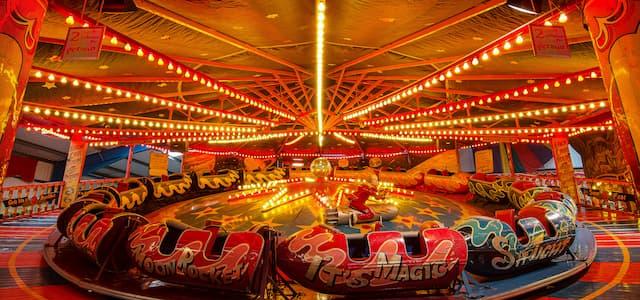
The Herefordshire Hoard: how a historic treasure find went wrong
What would you do if you discovered buried treasure dating back over a thousand years? In 2015, two men were faced with this question, and now they’re serving time in prison…
We spoke to Peter Reavill, former Find Liaisons Officer for the Portable Antiquities Scheme and now Historic Environment Records Officer with Herefordshire Council, to find out more.
In a field near Leominster
In the summer of 2015, rumours of a spectacular but undeclared treasure discovery were circulating among the UK’s close-knit metal detectorist community. “During my 18 years as a Finds Liaison Officer,” says Peter, “rumours like this were not unusual, but they were more persistent this time.”
Alarms were raised further when two treasure hunters posted photos of rare coins on an online detectorists’ forum. The photos made their way to Peter.
“I contacted the two finders, offering support and letting them know their legal obligations under The Treasure Act,” he says. The response he received? “They said they hadn’t found any treasure…” Several days later, he discovered they had visited the Amgueddfa Cymru - Museum of Wales to report some of their finds.
Peter contacted the British Museum. He was told that coins very similar to those he had seen had recently been put up for sale at an auction house in London. “At that point we involved the coroner, who brought in the police,” he says.
Eventually, the police raided the two detectorists’ houses in South Wales and discovered numerous photos of treasure on their phones – including treasure still half-buried in a field near Leominster, Herefordshire.
The photos showed around 300 coins, but the police could only recover 29. To this day, the whereabouts of the rest of the coins are unknown – the finders have refused to give up their location. The rarest coins may have been worth £80,000 each.
The detectorists were charged with theft and conspiracy to conceal and convert criminal property, and are now in prison. Peter says: “If they had followed the law, the two detectorists could now be millionaires.”
The Herefordshire Hoard
The recovered treasure is now known as The Herefordshire Hoard. It is made up of:
- 29 rare coins, including a 'Two Emperor' style featuring Alfred the Great of Wessex and Ceolwulf II of Mercia
- a gold arm ring with beast head clasp
- a pendant made from a sphere of polished rock crystal mounted in a gold frame
- a massive gold octagonal finger ring with black inlay
Peter says: “Even though it is only a fraction of what it once was, it is still considered one of the most significant early medieval treasures ever discovered in Britain.
“It was likely buried around 878, probably as part of a high-status Viking hoard gathered during raids.”
The coins from the kingdoms of Wessex and Mercia share similar designs, suggesting a previously unknown alliance of equals between Alfred the Great and Ceolwulf II, perhaps formed to strengthen their battle against the Vikings.
The history books portray Alfred as far more powerful and important, so the coins are helping historians better understand Britain’s past. Peter laments: “If we had the full hoard, a far richer and fuller story could have been told.”
On public display thanks to NHMF funding
Hereford Museum Service Support Group and Herefordshire Council led a fundraising campaign to acquire the hoard, which included a £402,250 grant from the National Heritage Memorial Fund. Support also came from the Art Fund, Garfield Weston Foundation, Headley Trust and members of the public.
It will eventually go on display at Hereford Museum and Art Gallery following a redevelopment project. In the meantime, Herefordshire Museum Service is putting on a series of public open days in 2023.
Finding treasure the right way
The Treasure Act 1996 sets out the rules in England, Wales and Northern Ireland.
Its definition of treasure includes objects made of more than 10% silver or gold and over 300 years old. See the Portable Antiquities Scheme’s website for a fuller definition. Treasure should be reported to the local coroner within 14 days.
In Scotland, Treasure Trove Scotland asks for finds to be reported immediately.
Who gets the reward?
Detectorists should seek permission from the landowner and check local and national laws beforehand.
If the detectorists have done so, any rewards are usually divided between themselves and the landowner. If they have not, they may receive a reduced share or nothing at all.
Some detectorists waive their rewards to help finds enter museum collections.
Need advice?
The Portable Antiquities Scheme contains lots of help for detectorists in England and Wales, including contacts for Find Liaison Officers.
The Department for Communities can support in Northern Ireland, while the Treasure Trove Unit can help in Scotland.
Why people enjoy metal detecting
Estimates vary, but it is thought that there are between 30,000 to 40,000 detectorists in the UK today. What does Peter think they get out of it?
“I have worked alongside many metal detectorists”, he says, “and I’d say the vast majority are interested in the history of it. They usually have connections to the area or landscapes they are searching.”
“Many also find it extremely beneficial for their mental health – being able to relax outdoors with a hobby. This was especially true in the pandemic.”
Working together to build a picture of our history
The Portable Antiquities Scheme records their finds and uses them to better understand history in England and Wales. Its website states that: “To date, over 1.4million items have been recorded, from prehistoric-worked flint to post-medieval dress accessories.”
Peter says: "Detectorists have great pride in showing their finds to friends and family in a museum. Each object has a story of how it was found.
“When archaeologists and metal detectorists work together, that is when we get the best results for building a picture of our shared history.”

